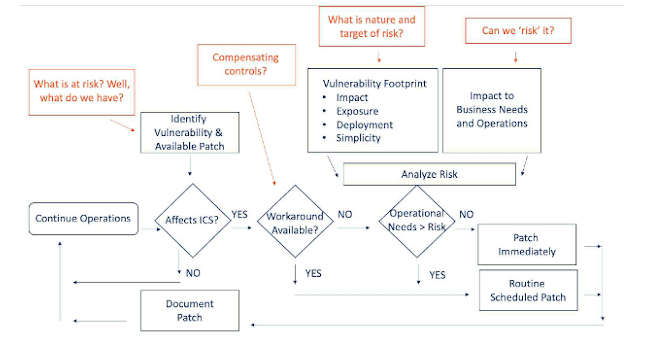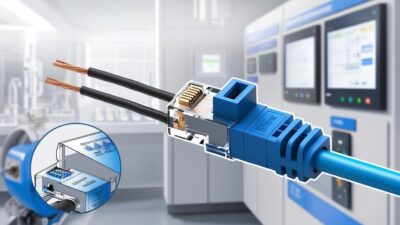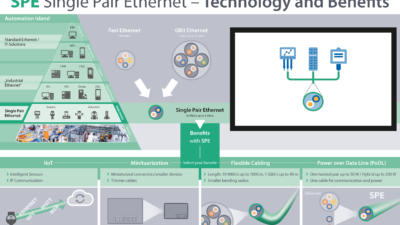How and when to apply OT/ICS compensating controls when software patching is not an option in industrial cybersecurity.

Most operational technology (OT) environments use scan-based patching tools, which are pretty standard but not overly insightful to show us what assets we have and how they are configured. What is really needed is robust asset profiles with their operational context included. Asset IP, model, OS, etc., is a very cursory listing of what might be in scope for the latest patch. What is more valuable is the operational context such as asset criticality to safe operations, asset location, asset owner, etc. in order to properly contextualize our emerging risk because not all OT assets are created equal. So why not first protect the critical systems or identify suitable testing systems (that reflect critical field systems) and strategically reduce risk?
And while we are building these asset profiles, we need to include as much information as possible about the assets beyond IP, Mac address and OS version. Information such as software installed, users/account, ports, services, registry settings, least privilege controls, AV, whitelisting and backup status etc. These types of information sources increase our ability to prioritize and strategize our actions when new risk emerges. Want proof? Take a look at the usual analysis flow offered below. Where will you get the data to answer the questions at the various stages? Tribal knowledge? Instinct? Why not data?
Automate remediation for software patching
Another software patching challenge is the deployment and preparation to deploy patches (or compensating controls) to the endpoints. One of the most time-consuming tasks in OT patch management is the prep work. It often includes identifying target systems, configuring the patch deployment, troubleshooting when they fail or scanning first, pushing the patch, and re-scanning to determine success.
But what if, for example, the next time a risk like BlueKeep appeared, you could pre-load your files on the target systems to prepare yourself for the next steps? You and your smaller, more agile OT security team could plan which industrial systems you rolled patch updates to first, second, and third based on any number of factors in your robust asset profiles like asset location or criticality.
Taking it a step further, imagine if the patch management technology did not require a scan first, but rather had already mapped the patch to in-scope assets and as you installed them (either remotely for low risk or in-person for high risk), those tasks verified their success and reflected that progress in your global dashboard?
For all of your high-risk assets that you cannot or don’t want to patch right now could instead create a port, service, or user/account change as an ad-hoc compensating control. For a vulnerability such as BlueKeep, you could disable the remote desktop or the guest account. This approach immediately and significantly reduces current risk and also allows more time to prepare for the eventual patch. This brings me to the ‘fall back’ actions of what to do when patching isn’t an option – compensating controls.
What are compensating controls?
Compensating controls are simply actions and security settings you can and should deploy in lieu of (or rather as well as) patching. They are typically deployed proactively (where possible), but can be deployed in an event or as temporary measures of protection such as disabling remote desktop while you patch for BlueKeep.
Identify and apply compensating controls in OT security
Compensating controls take many forms from application whitelisting and keeping antivirus up-to-date. In this case, let’ focus on ICS endpoint management as a key supporting component of OT patch management.
Compensating controls can and should be used both proactively as well as situationally. It would be no surprise to anyone in OT cyber security to discover dormant admin accounts and unnecessary or unused software installed on endpoints. It is also no secret that best practice system hardening principles are not nearly as universal as we would like.
To protect our OT systems, we also need to harden our prized possessions. A real-time, robust asset profile allows industrial organizations to accurately and efficiently clear out the low-hanging fruit (i.e., dormant users, unnecessary software, and system hardening parameters) to significantly reduce the attack surface.
In the unfortunate event, we have an emerging threat (like BlueKeep) adding temporary compensating controls is doable. A quick case study to highlight my point:
- BlueKeep vulnerability is released.
- The central team disables remote desktop on all field assets and emails field team requiring specific requests on a system-by-system basis for remote desktop service to be enabled during the risk period.
- Central team pre-loads patch files on all in-scope assets – no action, just prepare.
- The central team convenes to decide the most reasonable plan of action by asset criticality, location, presence or absence of compensating controls (i.e., a critical risk on a high impact asset that failed its last backup goes to the top of the list. A low impact asset with whitelisting in effect and a recent good full backup can likely wait).
- Patching rollout begins, and progress is updated live in global reporting.
- Where necessary, OT technicians are at the console overseeing the patch deployment.
- The schedule and communication of this need are fully planned and prioritized by the data used by the central team.
This is how OT patch management should be handled. And more and more organizations are starting to put this type of program in place.
Be proactive with compensating controls
ICS patch management is hard, yes, but simply giving up on trying is not a good response either. With a bit of foresight, it is easy to provide the three most powerful tools for easier and more effective patching and/or compensating controls. Insight shows you what you have, how it is configured, and how important it is to you. Context lets you prioritize (first attempt to patch – second lets you know how and where to apply compensating controls). The action allows you to correct, protect, deflect, etc. To only rely on monitoring is to admit you expect fire and buying more smoke detectors might minimize the damage. Which approach do you think your organization would prefer?
This article originally appeared on Verve Industrial’s website. Verve Industrial is a CFE Media content partner.


